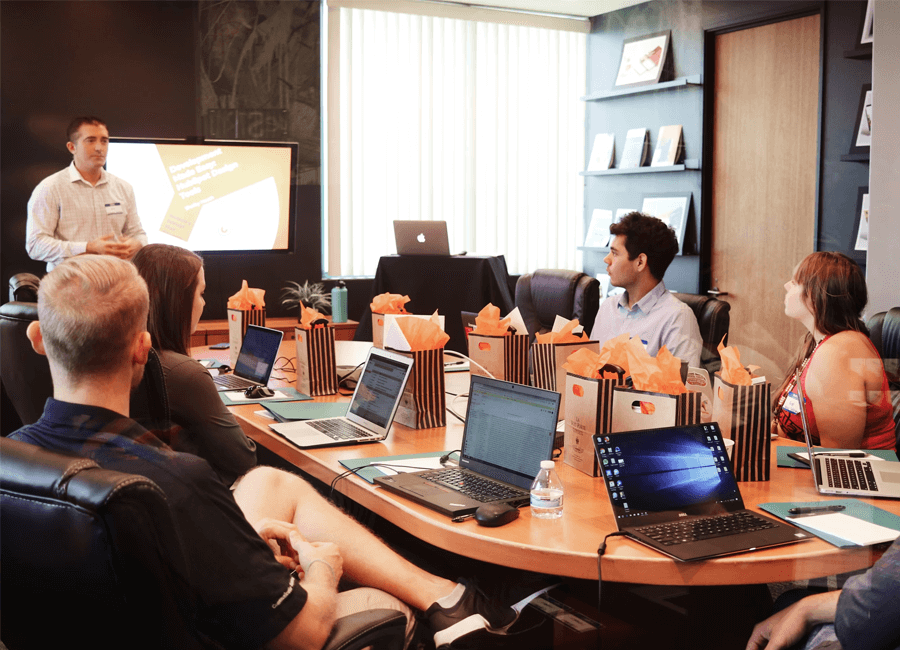Behavioural science describes the study of human behaviour and one factor that can strongly impact our behaviour as humans is bias. Therefore, as insight professionals, we often consider how participant biases may influence our research. At times, we also seek participants with a pre-existing bias such as brand or product preference. However, as insight professionals, it is also important to be aware of our own biases and how they may influence our research, especially in our daily pursuit of high-quality qualitative insights.
Qualitative research provides rich, unique insights into often marginalised voices and experiences. As qualitative researchers, we play a central role in qualitative research as we actively collect, analyse and present data. In doing so, our own experience's inherently mould the shape of the research. Therefore, it is also important to understand how our subjectivity influences the research.
Without taking account of our biases, our subjectivity may unintentionally lead or distort the research, rather than enhance it. Therefore, this article will discuss how to assess your position as a qualitative researcher, consider how this may impact the research and what can be done to ensure qualitative research is conducted authentically, honestly and transparently.
| Tweet This | |
| One factor that can strong impact out behaviour is bias. Insight experts should often consider how biases might influence their research, and therefore the insights generated. |
To help solve this problem, Dwyer and Buckle have posed a question to qualitative researchers. Are you an “Insider”, an “Outsider” or “Somewhere in between”? They have claimed there are three types of qualitative researchers and that their position as a researcher can vary depending on each project at hand. The following article will describe the three types of researchers and explore how each role can shape the research and precautions that should be taken to safeguard the integrity of the research.
Insiders
“Insider” researchers can relate on a personal level to the group that they are researching. For example, you could be conducting a focus group for new mums who are trialling a new baby formula, while being a recent mother yourself. Being an Insider can often enhance qualitative research, in both rich insights and group acceptance.
Rich Insights
As Insiders can resonate with the group they are studying, an insider can feel empathy, as opposed to sympathy. When you’re on the “Inside”, you can often understand subtle nuances and complexities surrounding the topic. So much so, that experiences can remain unspoken but inherently understood by others.
Group Acceptance
These rich insights are obtained from Group Acceptance. Being a part of the same group, it will often encourage participants to provide a level of trust and openness that may not otherwise have been. This can lead to richer exploration and a deeper understanding of the participant's experiences. They may be more willing to share their experiences because there is an assumption of understanding. It also affords access into groups that may have been closed to “Outsiders”. However, being an Insider can also pose challenges for qualitative research.
Role Confusion
“I still remain unclear whether this is my interpretation of an actual phenomenon, or if I am projecting my own need . . . onto my participants.”
Researchers may have difficulty separating their own experiences from the participants. In addition, researchers may carry assumptions based on their own experiences and therefore lack exploration into particular areas that may be otherwise explored by an “Outsider”.
Outsiders
By contrast, outsiders fall outside of the group they are exploring. However, being an outsider can afford unique and potentially beneficial insights when conducting qualitative research, such as distance.
Distance
Whereas “Insiders” carry the complexity of emotions assigned with experience. Being an outsider provides a “distance” that can provide a sense of clarity. "Outsiders" can also appreciate a wider perspective on the experience and find patterns or links that may have otherwise been missed. Lastly, "Insiders" might have an unintentional bias to paint a part of the group they represent in a certain light. "Outsiders" will not have the same intrinsic motivations that could contribute to distortion.
Although, distance from a group can also bring potential limitations. Firstly, participants may not be as comfortable opening up to an "Outsider". Secondly, an "Outsider" may also bring unintentional biases or preconceived ideas to the research that may distort the research.
The Space Between
Some have stated that the idea of a researcher being either an "Insider" or an "Outsider" is too dichotomous. Arguing that it is overly simplistic to assume that a researcher is either one or the other. Therefore, "The space between" represents researchers who fall into the in-between. They may relate with some aspects of the "Insider" but not all - and feel they can relate to the participants more than an "Outsider".
However, regardless of "researcher status", some argue that it is more important to be open, authentic and genuinely interested in the participant's experiences and be committed to reflecting them accurately. One approach to helping qualitative researchers conduct authentic research is the practice of reflexivity.
The Practice of Reflexivity
"Reflexivity generally refers to the examination of one’s own beliefs, judgments and practices during the research process and how these may have influenced the research"
Whereas reflection will analyse events as they have passed, reflexivity takes a step further. Reflexivity is an active process that requires the researcher to self-assess their assumptions and also challenge them.
“There is no neutrality. There is only greater or less awareness of one’s biases. And if you do not appreciate the force of what you’re leaving out, you are not fully in command of what you’re doing”
Practising reflexivity is important to ensure that your own experiences enhance the research rather than lead or distort it. Incorporating it into qualitative research can help ensure that the research is conducted authentically, honestly and transparently regardless of status as an "Insider", "Outsider" or "The space between".
Understanding the Impacts of Bias
As insight professionals seek to generate reliable and accurate insights on consumer behaviour, it’s important to understand how biases can impact this outcome. Throughout this article, we have established that the inherent subjectivity of qualitative research is what affords its unique and rich insights and the central and active role the researcher plays in moulding these insights.
We have explored the three types of researcher, “Insiders”, “Outsiders” and “The space between” and how each of these roles can both enhance and hinder the research. Due to this, we have also discussed the importance of the practice of reflexivity is within qualitative research. The practise can ensure that, regardless of position, biases, assumptions and preconceptions are continually accounted for and challenged so that the research is enhanced by subjectivity, rather than distorted.


















